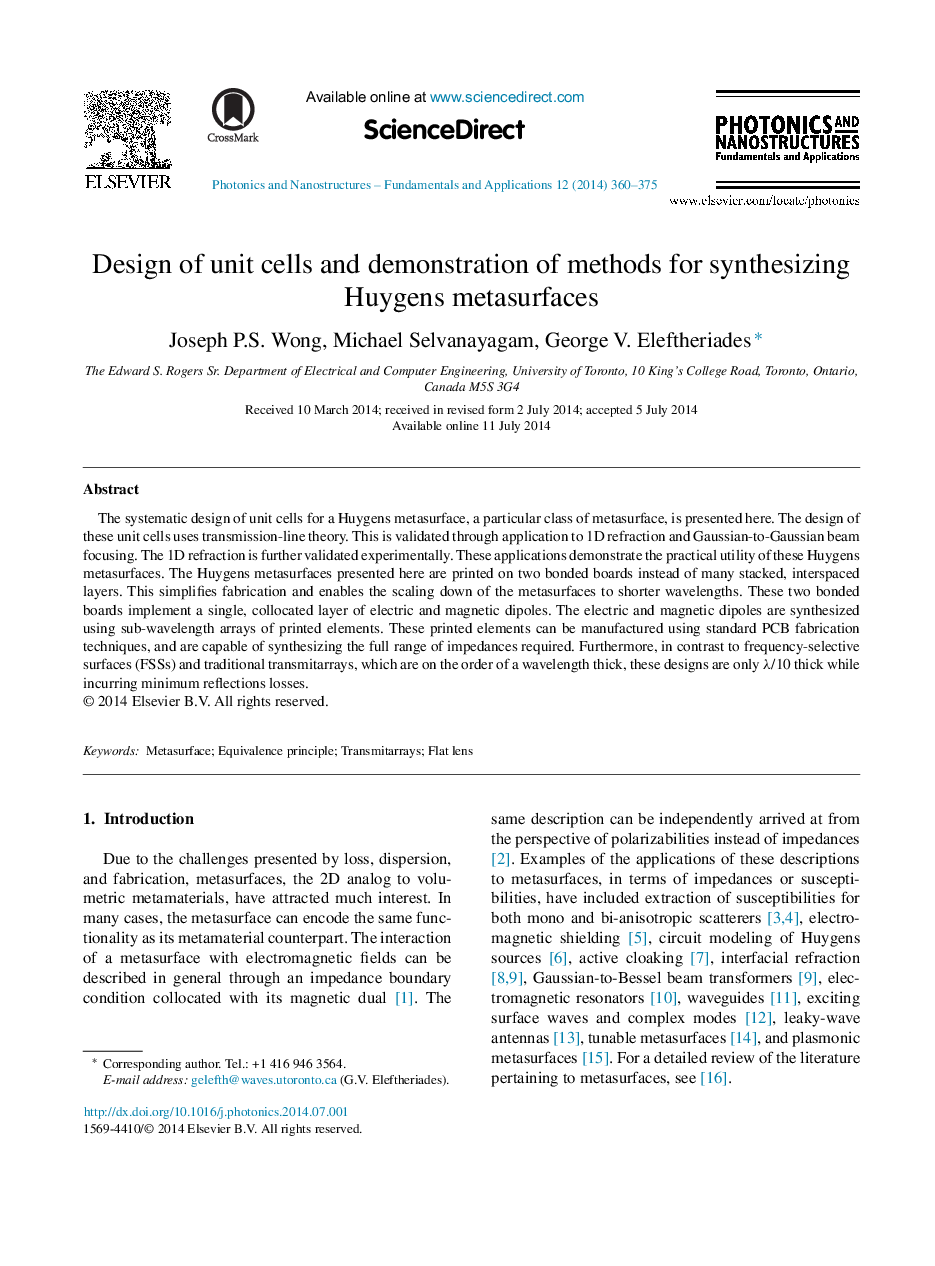| Article ID | Journal | Published Year | Pages | File Type |
|---|---|---|---|---|
| 1543425 | Photonics and Nanostructures - Fundamentals and Applications | 2014 | 16 Pages |
•Systematic design of unit cells for passive and lossless Huygens metasurfaces.•Design procedure applied to refraction and focusing.•Demonstrated suppressed side-lobes and reflections for refraction and focusing.•Refraction behaves as expected for frequency and oblique response.•Gaussian focusing produces a reliable minimum waist size and position.
The systematic design of unit cells for a Huygens metasurface, a particular class of metasurface, is presented here. The design of these unit cells uses transmission-line theory. This is validated through application to 1D refraction and Gaussian-to-Gaussian beam focusing. The 1D refraction is further validated experimentally. These applications demonstrate the practical utility of these Huygens metasurfaces. The Huygens metasurfaces presented here are printed on two bonded boards instead of many stacked, interspaced layers. This simplifies fabrication and enables the scaling down of the metasurfaces to shorter wavelengths. These two bonded boards implement a single, collocated layer of electric and magnetic dipoles. The electric and magnetic dipoles are synthesized using sub-wavelength arrays of printed elements. These printed elements can be manufactured using standard PCB fabrication techniques, and are capable of synthesizing the full range of impedances required. Furthermore, in contrast to frequency-selective surfaces (FSSs) and traditional transmitarrays, which are on the order of a wavelength thick, these designs are only λ/10 thick while incurring minimum reflections losses.
